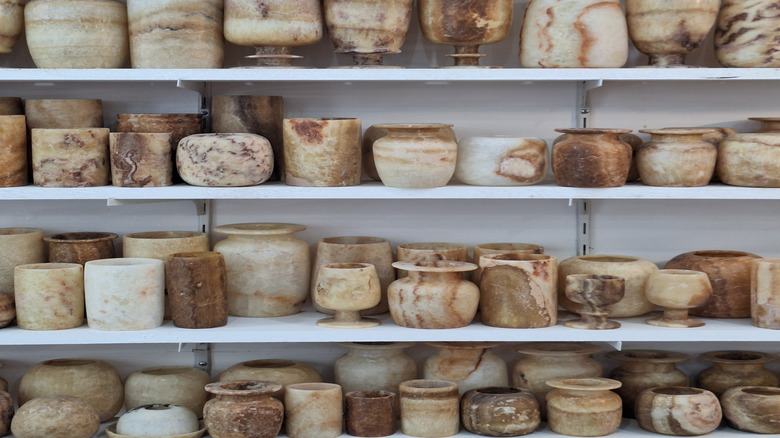The Valuable Vintage Material You Can Thrift That Designers Are Drawn To
Sourcing your home decor secondhand is a great way to snag quality materials for budget-friendly prices. However, some brands have already hit a peak when it comes to their resale price. If you've been searching for vintage dishware to bring retro charm to your kitchen, try looking beyond the brands and consider the material itself. Alabaster is a stunning stoneware material that is still under the radar for everyday vintage purchasers.
Alabaster has a rich history that dates back thousands of years. In fact, the popularity of alabaster vessels dates all the way back to ancient Egypt. In the late 18th century, alabaster had another resurgence, especially in the construction of pedestals, vases, lighting, and decor. It was most favored in England, and its popularity continued throughout the 19th century. Alabaster can come in a variety of colors, including (but not limited to) black, ochre, ivory, white, and green. The raw material is harvested in North America, England, and Italy.
The benefits of sourcing vintage alabaster stoneware
Alabaster stoneware may not have a brand name attached like Fiesta or Blue Ridge, but it is still highly coveted among designers. Look for shallow bowls that sit on top of a pedestal. These stoneware dishes appear like a small birdbath in form. Online, you can easily find alabaster fruit bowls for several hundred dollars on secondhand websites, further proving their growing value and demand. Get styling inspiration for your vessels by exploring the best ways to decorate with pottery in your home.
Porcelain, an extremely durable and coveted earthenware material, is actually made from kaolin alabaster before being fired in a high-heat kiln. There are several valuable brands of vintage porcelain that are worth looking out for, but raw alabaster is ideal if you love the idea of stoneware in its purest form. Both alabaster and porcelain homeware have been produced for thousands of years, but alabaster is much softer than porcelain due to the fact that it is an unfired, porous stone. Because it is more delicate, keep in mind that it is preferable for indoor, decorative use.

